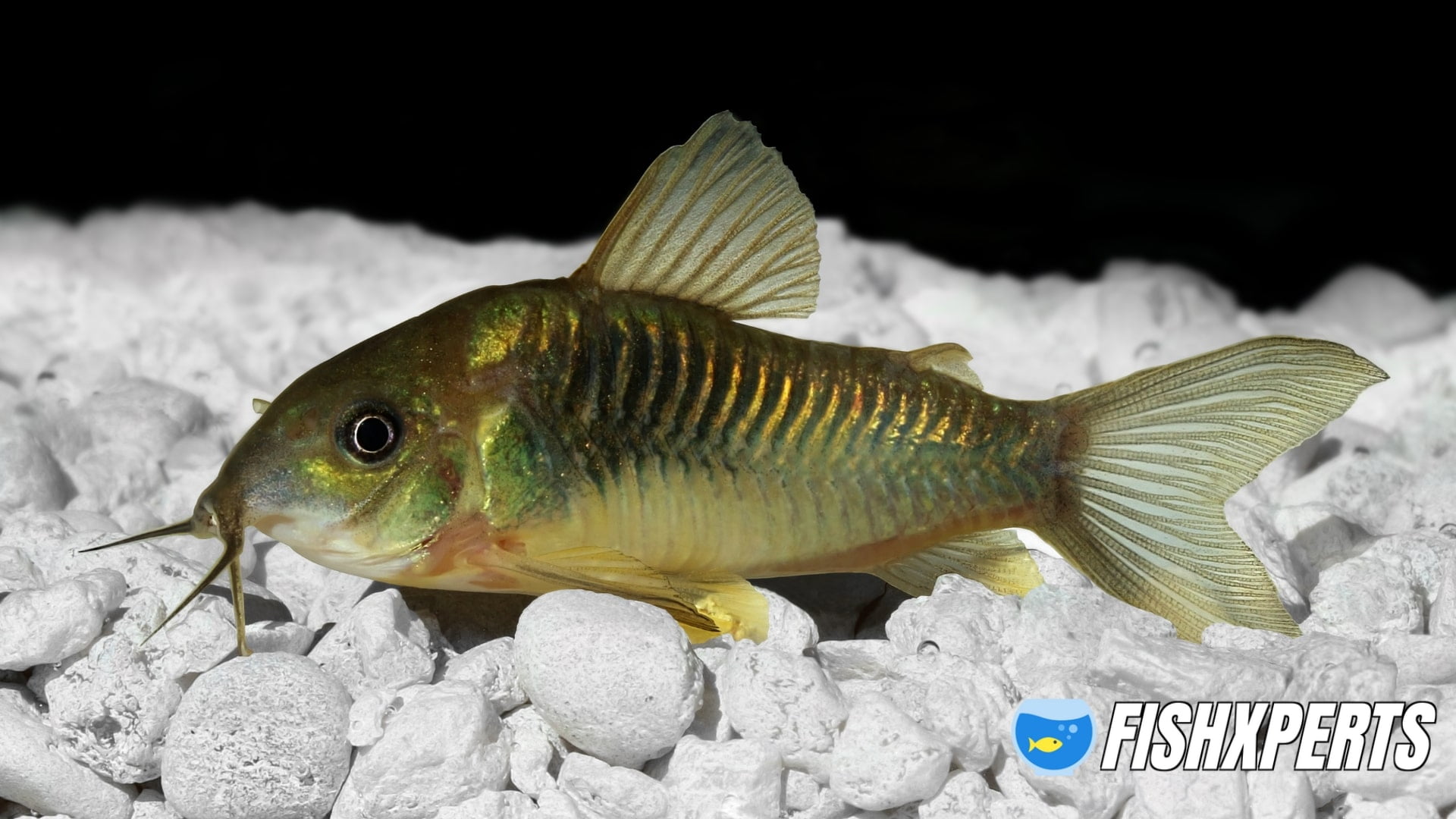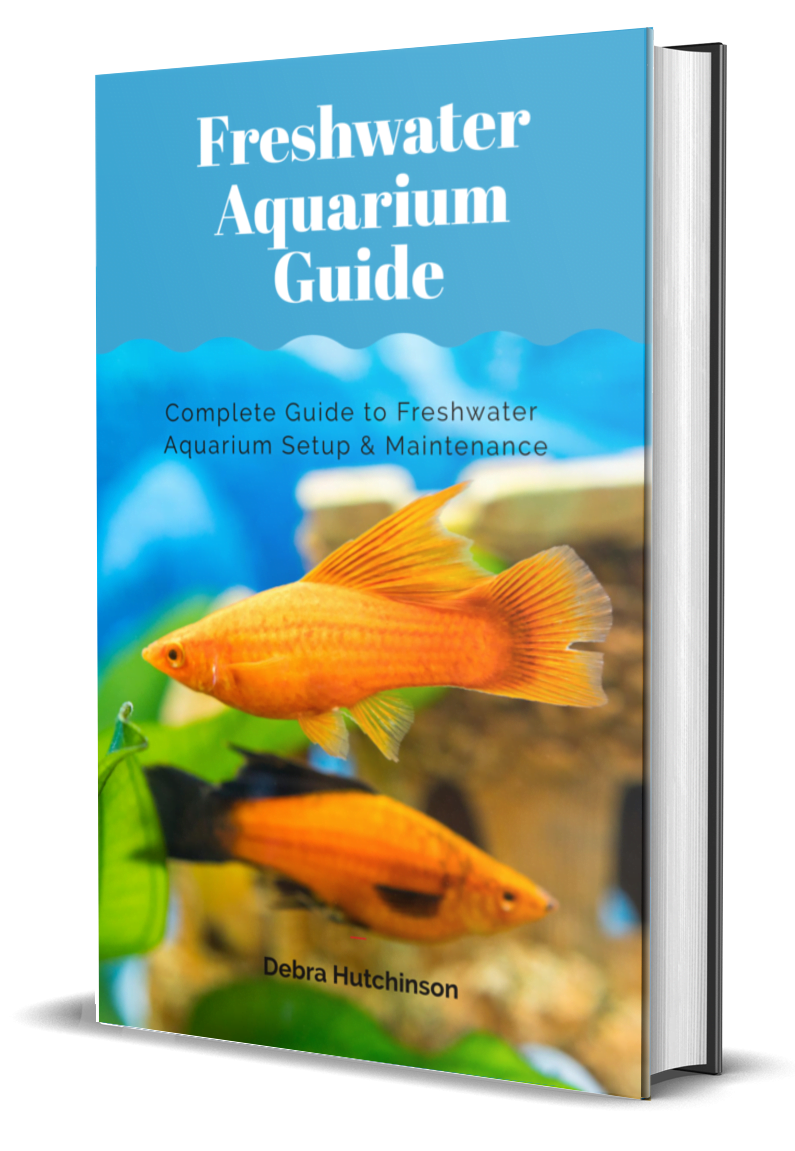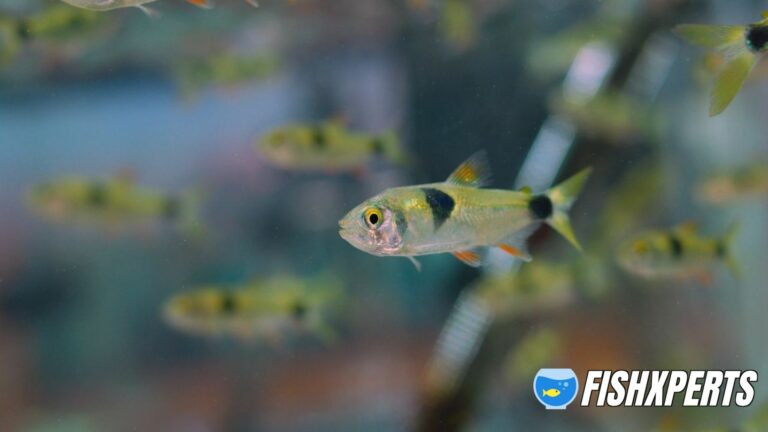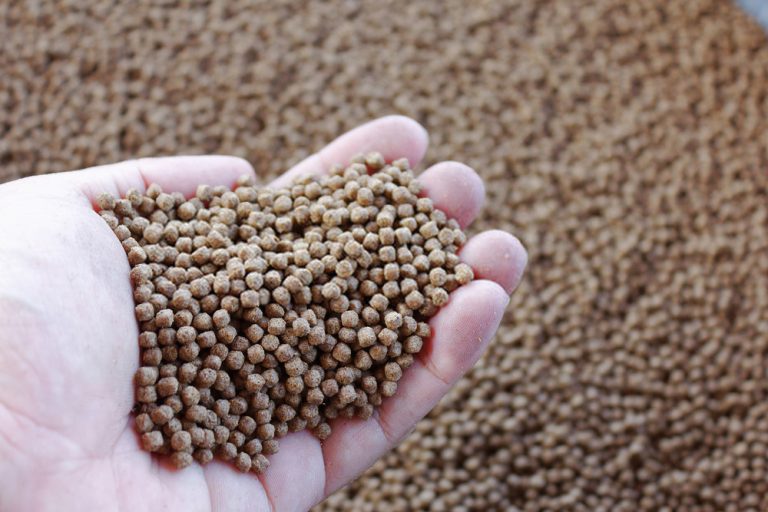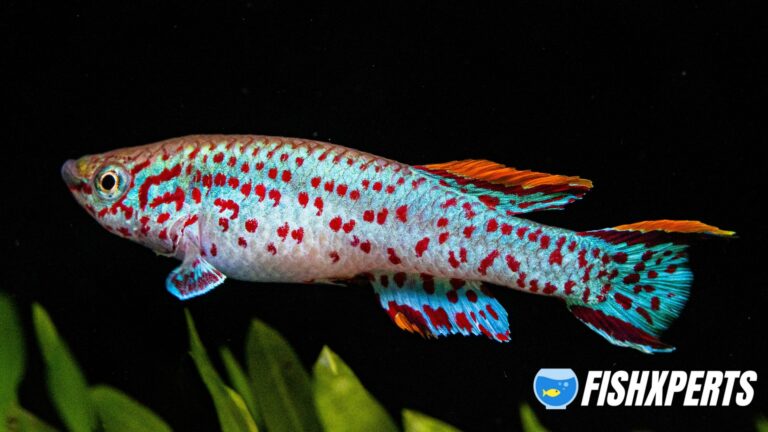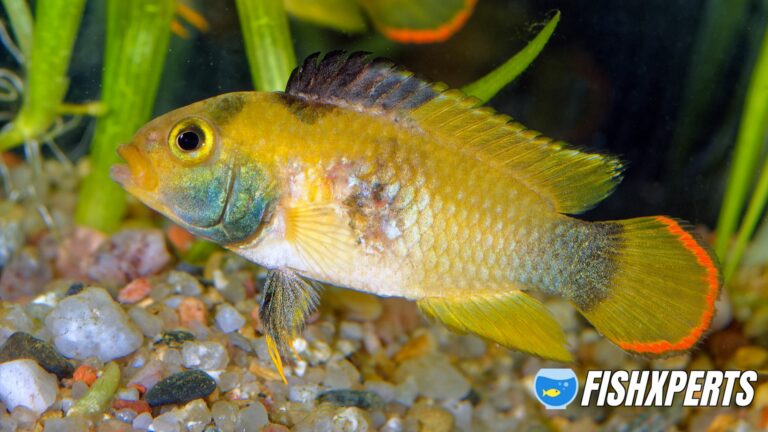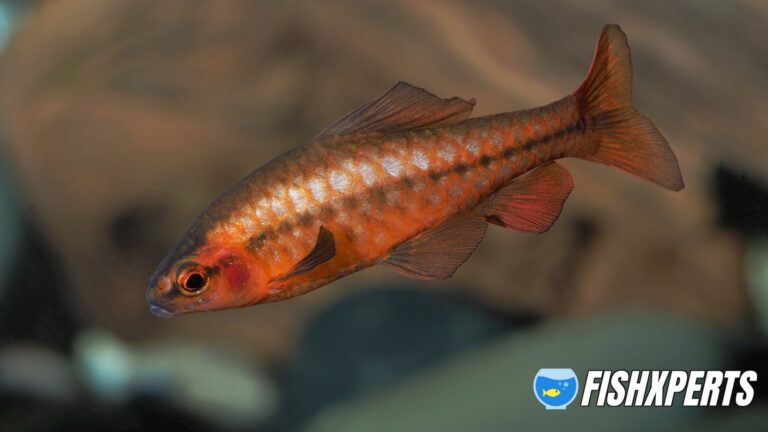Cory Catfish Care
Overview
The Cory Catfish is a small, peaceful, bottom-dwelling fish that is a popular addition to freshwater aquariums. Corys are schooling fish, so they should be kept in groups of at least 3-5 fish. They are relatively easy to care for and are compatible with a wide variety of tank mates.
Corys are omnivorous and will eat a variety of foods, but should be given a diet that is high in vegetables and protein.
Cory catfish are a popular choice for many aquariums because of their peaceful nature and bottom-dwelling habits. They are relatively easy to care for, but there are a few things to keep in mind to ensure your cory catfish stay healthy and happy.
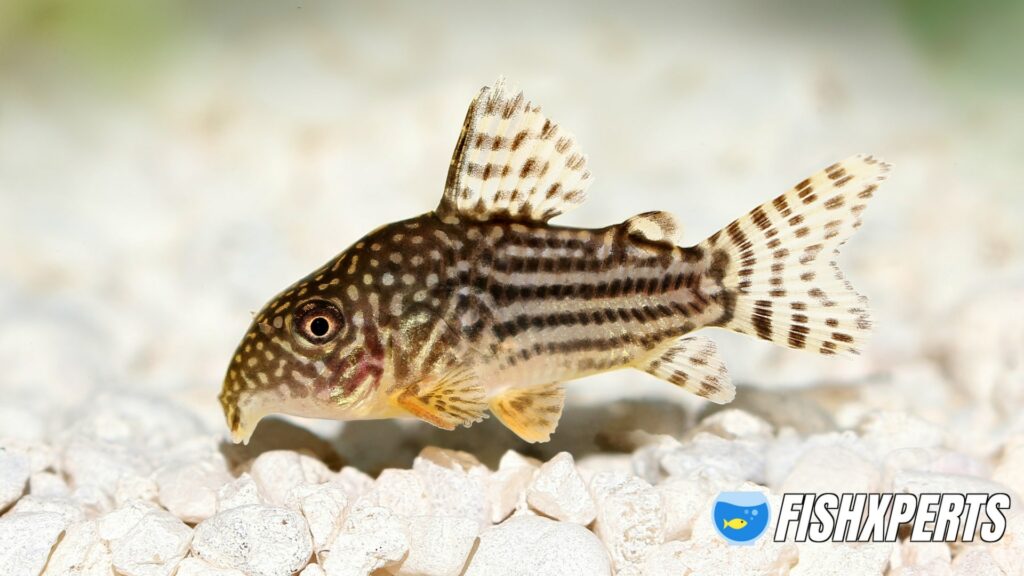
Cory Catfish Care Tips In Brief
- Provide a well-rounded diet of sinking pellets or flakes, as well as live or frozen foods.
- Corys are social creatures and do best in groups of 3 or more.
- Keep the aquarium well-filtered and maintain regular water changes to keep the water quality high.
- Provide plenty of hiding places and smooth surfaces for the corys to rest on.
By following these simple tips, you can ensure your cory catfish will thrive in your aquarium!
Appearance and Size
The Cory catfish is a small, peaceful catfish that is a popular addition to many home aquariums. They are bottom-dwellers and do best in groups of 3 or more. Corys are relatively small fish, with most species reaching a maximum size of about 4 inches (10 cm).
They have a wide, flat head and a torpedo-shaped body that is covered in small, round scales. Corys come in a variety of colors, including shades of brown, black, and green. Some species also have patterns of stripes or spots.
Corys are relatively easy to care for and make a great addition to any aquarium. They are hardy fish that are tolerant of a wide range of water conditions. Corys are active fish that enjoy swimming and exploring their tank. They are peaceful fish that get along well with other community tank mates. Corys are a good choice for beginner fishkeepers.
When choosing a Cory catfish for your aquarium, it is important to select a species that is compatible with the other fish in your tank. Corys are available in a variety of sizes and colors, so you should be able to find a species that will fit well in your aquarium.
Types Of Cory Catfish
Cory catfish are a member of the family Callichthyidae and are native to freshwater habitats in South America. There are over 170 species of cory catfish, making it one of the most diverse families of freshwater fish.
Cory catfish come in a wide variety of shapes, sizes, and colors. The most common type of cory catfish kept as a pet is the bronze cory catfish (Corydoras aeneus), which is a small, hardy, and peaceful fish. Other popular types of cory catfish include the albino cory catfish (Corydoras paleatus) and the pygmy cory catfish (Corydoras pygmaeus).
Cory catfish are bottom-dwellers and do best in an aquarium with plenty of hiding places and a sandy substrate. They are peaceful fish that should be kept in groups of at least six. Cory catfish are known for their habit of “cleaning” the tank by eating algae and detritus.
Bronze Cory Catfish (Corydoras aeneus)
The bronze cory catfish is the most common type of cory catfish kept as a pet. It is a small, hardy, and peaceful fish that does well in a community tank. The bronze cory catfish is brown with black spots and has a maximum size of about 3 inches (7.5 cm).
Albino Cory Catfish (Corydoras paleatus)
The albino cory catfish is a popular type of cory catfish due to its unique white coloration. It is a peaceful fish that does well in a community tank. The albino cory catfish has a maximum size of about 3 inches (7.5 cm).
Pygmy Cory Catfish (Corydoras pygmaeus)
The pygmy cory catfish is the smallest type of cory catfish. It is a peaceful fish that does well in a community tank. The pygmy cory catfish has a maximum size of about 1.5 inches (3.8 cm).
Cory Catfish Care – Preventing Disease
Cory catfish are relatively hardy fish, but they are still susceptible to disease. There are a few things you can do to help prevent your corys from getting sick.
First, make sure you are using clean, fresh water. Corys are sensitive to water quality, so it’s important to keep their tank clean. Regular water changes and good filtration will go a long way in keeping your corys healthy.
Second, don’t overfeed your corys. They are bottom-feeders and will eat just about anything you drop in the tank, but they don’t need a lot of food. Overfeeding can lead to obesity, which can put your corys at risk for a number of health problems.
Finally, don’t overcrowd your corys. They do best in groups of at least six, but more is better. A crowded tank can lead to stress, which can make your corys more susceptible to disease.
By following these simple tips, you can help keep your corys healthy and happy for many years to come.
How Long Do Cory Catfish Live?
Cory catfish are a long-lived species, with a lifespan of 10-15 years in captivity. However, wild caught fish may not live as long due to the stress of capture and transportation. In the wild, these fish can live up to 20 years.
Cory catfish are a hardy species that does well in a variety of water conditions. They are tolerant of a wide range of temperatures and water hardness levels. However, they prefer water that is slightly acidic to neutral (pH 6.5-7.5).
To ensure a long and healthy life for your cory catfish, provide them with a spacious tank with plenty of hiding places and a good quality filter. They should also be fed a varied diet of live, frozen, and freeze-dried foods.
Recommended Tank And Water Conditions
Tank Size
Cory catfish are a peaceful and social species that does best in groups. They should be kept in an aquarium with at least 5 other cory catfish, and a 20 gallon tank is the minimum size recommended. If you have a larger aquarium, you can keep more cory catfish.
Cory catfish are bottom-dwellers, and they prefer a sandy substrate in their aquarium. They also like to hide among plants and decorations, so be sure to include plenty of hiding places in their tank. Cory catfish are peaceful fish and get along well with other peaceful fish species.
Water Parameters
Water parameters are important to consider when keeping cory catfish. The ideal water temperature for cory catfish is between 74-79 degrees Fahrenheit. The pH level of the water should be between 6.5 and 7.5. The water should be well-oxygenated and the ammonia and nitrite levels should be at zero.
Food & Diet
Cory catfish are opportunistic omnivores and will eat a variety of food items. In the wild, they are known to eat detritus, small insects, crustaceans, and other small invertebrates. In the aquarium, they will readily accept most sinking pellets and flakes, as well as live and frozen foods.
It is important to provide a varied diet to ensure optimal health and growth. A good quality sinking pellet or granule food should form the basis of the diet, supplemented with live or frozen foods such as bloodworms, brine shrimp, and daphnia.
Typical Behavior & Temperament
Corydoras are peaceful, bottom-dwelling scavengers that make excellent additions to any community aquarium. They are shy by nature and prefer to stay close to the substrate where they feel more secure. Corys are very active and love to play in the aquarium, but they are also content to simply rest on the bottom.
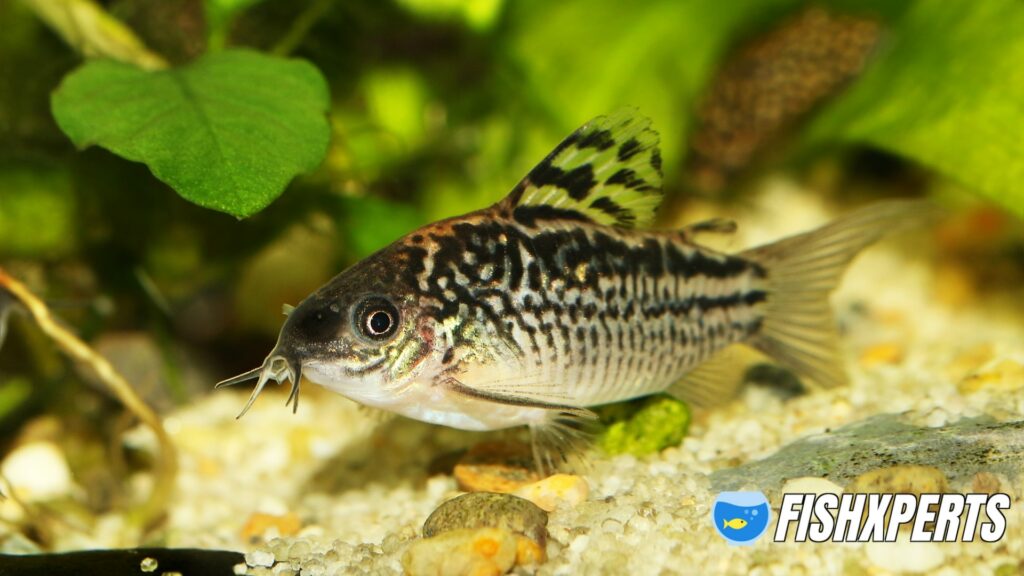
Corys are social creatures and do best when kept in groups of 4 or more. They are very active fish and love to play in the aquarium, but they are also content to simply rest on the bottom. Corys are very peaceful fish and get along well with other community fish.
Corydoras are shy by nature and prefer to stay close to the substrate where they feel more secure. They are very active and love to play in the aquarium, but they are also content to simply rest on the bottom. Corys are social creatures and do best when kept in groups of 4 or more.
Tank Mates
Cory catfish are peaceful community fish that do well with a variety of tank mates. They are particularly well-suited for tanks with other bottom-dwelling fish, such as loaches, catfish, and plecos. Corys are also compatible with most peaceful community fish, such as tetras, guppies, and mollies.
When choosing tank mates for your cory catfish, it is important to consider the size of your fish and the size of your tank. Corys are bottom-dwellers and prefer to have plenty of space to swim around. They should also be kept with fish that have a similar temperament.
Cory catfish are relatively easy to care for and make great additions to most community tanks. With a little research, you can find the perfect tank mates for your corys and create a happy and healthy environment for all of your fish.
Breeding Cory Catfish
Cory catfish are relatively easy to breed in the home aquarium. They are egg-layers, and will scatter their eggs among plants or other objects in the tank. Once the eggs hatch, the fry are very small and need to be fed microscopic food.
The fry will grow quickly, and can be fed to larger foods after a few weeks. Cory catfish can be bred in pairs or in groups. If breeding in pairs, it is best to remove the fry from the parents tank, as the parents may eat them. If breeding in groups, the fry can be left with the parents, as they will not be as likely to be eaten.
Option 1: Dedicated Breeding Tank
If you are planning on breeding your cory catfish, then you will need to set up a dedicated breeding tank. This tank should be at least 10 gallons in size and should be well-filtered and heated. The water should be clean and well-oxygenated. You will also need to provide hiding places for the adults and plenty of soft, sandy substrate for the eggs and fry.
Cory catfish are egg-layers and will lay their eggs on the substrate. Once the eggs are laid, the adults should be removed from the tank. The eggs will hatch in 5-7 days and the fry will be free-swimming a few days after that. They can be fed newly hatched brine shrimp or commercial fry food.
If you are successful in breeding your cory catfish, you will end up with a lot of fry. You can either sell them or give them away to other aquarium enthusiasts.
Option 2: Dedicated Fry Tank
When setting up a fry tank, it is important to use a fine mesh net to cover the tank. This will keep the fry from swimming out and getting lost. The water in the fry tank should be shallower than the water in the main tank, and it should be well-aerated.
It is also a good idea to add some plants to the fry tank. This will provide hiding places for the fry and help to keep the water clean.
Cory catfish fry are very small and delicate, so they need to be fed small amounts of food several times a day. You can purchase special fry food, or you can crush up flakes or pellets to create a fine powder.
As the fry grow, they will need to be moved to a larger tank. It is best to do this gradually, over the course of a few weeks, to give the fry time to adjust to the new water conditions.
FAQ
Are cory catfish easy to care for?
Yes, cory catfish are very easy to care for. They are hardy fish that can tolerate a wide range of water conditions, making them ideal for beginner aquarists.
Corys are peaceful fish that do well in community tanks. They are bottom-dwellers and will spend most of their time scavenging for food. Corys are known for their love of eating algae, so they can be helpful in keeping your tank clean.
Corys are relatively small fish, so they don’t require a large tank. A 20-gallon tank is sufficient for a small group of corys. Corys prefer a sandy bottom and plenty of hiding places. live plants will also provide them with places to hide and help keep the water quality high.
Corys are omnivorous and will eat a variety of foods, including flakes, pellets, and live or frozen foods. Be sure to include a variety of foods in their diet to keep them healthy. Corys should be fed small amounts several times a day.
Water quality is very important for corys. They are sensitive to ammonia and nitrites, so it’s important to keep the water clean and well-filtered. Regular water changes are essential.
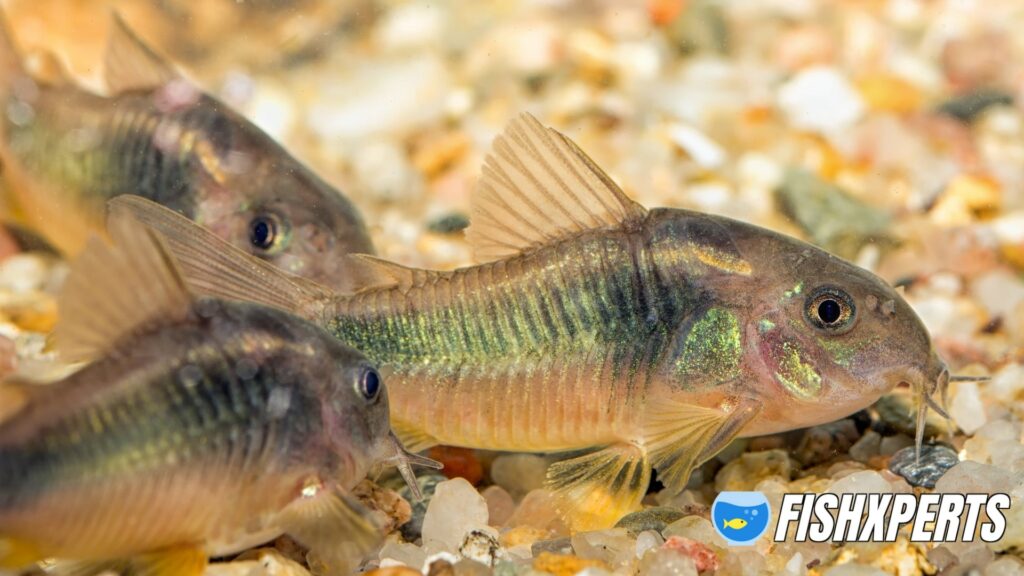
Corys are social fish and do best in groups. A group of 5 or more corys will be happiest. Corys can be kept with a variety of other peaceful fish.
Overall, cory catfish are easy to care for and make great additions to community tanks. They are hardy fish that are relatively low-maintenance, making them ideal for beginner aquarists.
How many cory catfish should be kept together?
In general, it is best to keep at least 3 corys together, as they are social creatures that enjoy being in a group. If you have a larger aquarium, you can keep more corys together. Just be sure to provide them with plenty of hiding places and a sandy bottom, as they like to burrow.
Corys are also known as “scavengers”, so they will help keep your aquarium clean by eating leftover food and detritus. They are an important part of any freshwater aquarium and will help keep your other fish healthy and happy.
Can you have just one Cory catfish?
Many aquarists choose to have only one Cory catfish in their aquariums. While Corys are social fish that prefer to live in groups, they can be happy and healthy when kept alone.
If you are considering keeping only one Cory, be sure to provide it with plenty of hiding places and a tank mate that is not too aggressive. Corys are peaceful fish that do well with other peaceful fish of a similar size.
What do cory catfish need in their tank?
Cory catfish are relatively easy to care for and make a great addition to any aquarium. They are peaceful bottom dwellers that do best in groups of 3 or more. Corys are scavengers and help keep the tank clean. They prefer a sandy substrate and plenty of hiding places.
Corys are sensitive to water quality and need a well-filtered tank. They are also sensitive to sudden changes in temperature and pH. Corys are a hardy species but can be sensitive to medications and chemicals used in the aquarium.
Do cory catfish clean the tank?
Cory catfish are often touted as being excellent tank cleaners, and while they do help to keep the tank clean, they are not the only fish that can perform this job. Other fish that are good at cleaning the tank include plecos, otocinclus, and Suckermouth Catfish.
Do Cory Catfish Need a Bubbler?
Cory catfish are peaceful, bottom-dwelling fish that are native to South America. They are a popular choice for aquariums because they are relatively easy to care for and are very active. Cory catfish are also very social creatures and do best when kept in groups.
One thing that is often debated among aquarists is whether or not cory catfish need a bubbler. Cory catfish are known for their love of swimming in the currents created by bubblers and many aquarists believe that this is necessary for their health and well-being.
However, there is no scientific evidence to support this claim and cory catfish can do just fine without a bubbler in their tank. ultimately, it is up to the aquarist to decide whether or not to add a bubbler to their cory catfish tank.
Do Cory catfish need live plants?
Cory catfish are often found in freshwater aquariums with live plants. These bottom-dwelling fish help to keep the aquarium clean by eating algae and other detritus. Corys are peaceful fish that do well in groups, and they can be a good addition to a community tank.
While live plants are not essential for Cory catfish, they do provide some benefits. Live plants can help to create a more natural environment for the fish, and they also help to oxygenate the water. Cory catfish are often found in the wild in areas with plenty of vegetation, so adding live plants to the aquarium can make them feel more at home.
If you do decide to add live plants to your Cory catfish aquarium, be sure to choose plants that are suitable for the conditions in your tank. Some Corys prefer plants that are rooted in the substrate, while others prefer floating plants. Be sure to do your research and choose plants that will thrive in your particular setup.
Do Cory catfish eat flakes?
Cory catfish are a type of freshwater fish that are commonly kept as pets. They are native to South America and are a member of the Corydoras family. Cory catfish are bottom-dwellers and are known for their scavenging habits. They will eat just about anything that falls to the bottom of the tank, including fish food flakes.
Flakes are a type of fish food that are made up of dried and compressed fish food. They are a popular type of fish food because they are easy to use and store.
Flakes can be found in a variety of different sizes, shapes, and colors. Cory catfish are not picky eaters and will gladly eat any type of fish food flake.
When choosing a fish food flake for your cory catfish, it is important to choose one that is high in quality and contains all of the nutrients that your fish need. There are many different brands and types of fish food flakes on the market, so it is important to do your research to find the best one for your fish.
Is 4 cory catfish enough?
Assuming you are talking about a standard sized 55 gallon tank, then yes, 4 cory catfish would be enough. Cory catfish are a peaceful bottom dwelling species that do well in groups. They are active fish and will often be seen swimming in the middle and lower regions of the aquarium. Corys are great scavengers and will help to keep the tank clean.
Conclusion
Cory catfish are a popular choice for freshwater aquariums. They are relatively easy to care for and make a great addition to any community tank.
Corys are peaceful bottom-dwellers that do best in groups of 3 or more. They are hardy fish and can tolerate a wide range of water conditions.
Corys are omnivorous and will eat a variety of foods, including pellets, flakes, live, and frozen foods. They should be fed 2-3 times a day in small amounts.
Corys are social creatures and do best when kept in groups. They are peaceful fish and make a great addition to any community tank.
Breeding Cory catfish is relatively easy. They can be bred in a dedicated breeding tank or in a fry tank. If you are planning to breed Corys, it is best to set up a dedicated breeding tank with soft, acidic water.
Corys are egg-layers and will lay their eggs on the substrate or on plants. Once the eggs are laid, the parents should be removed from the tank. The eggs will hatch in 5-10 days and the fry will be free-swimming a few days after that.
Topics Covered

